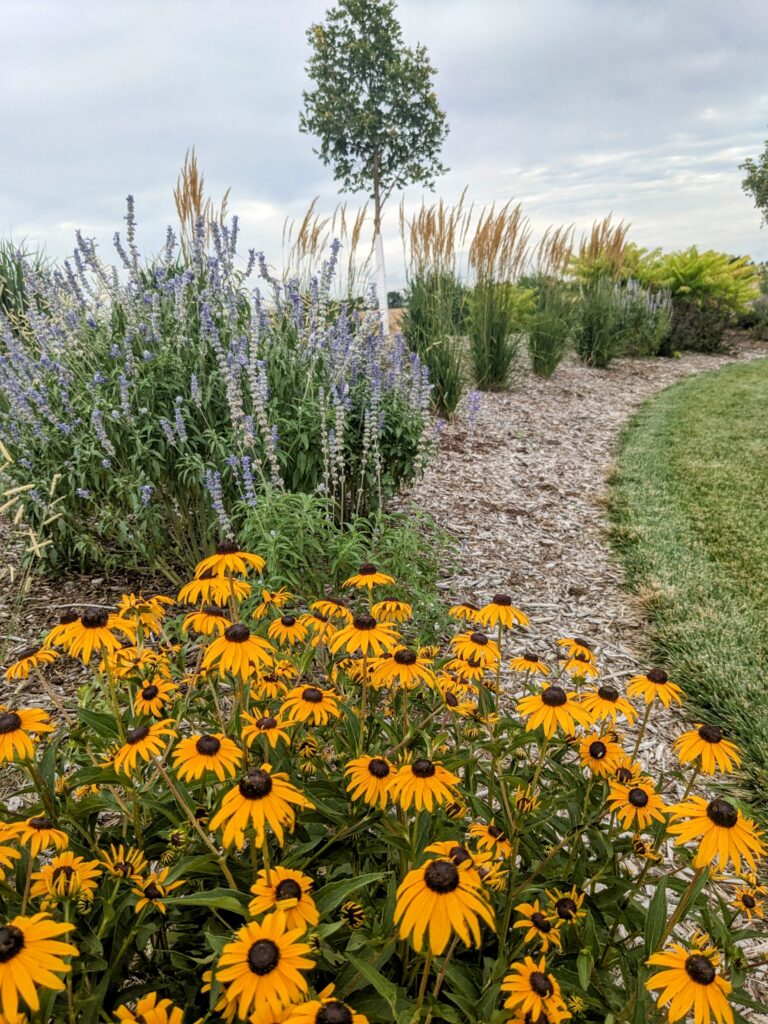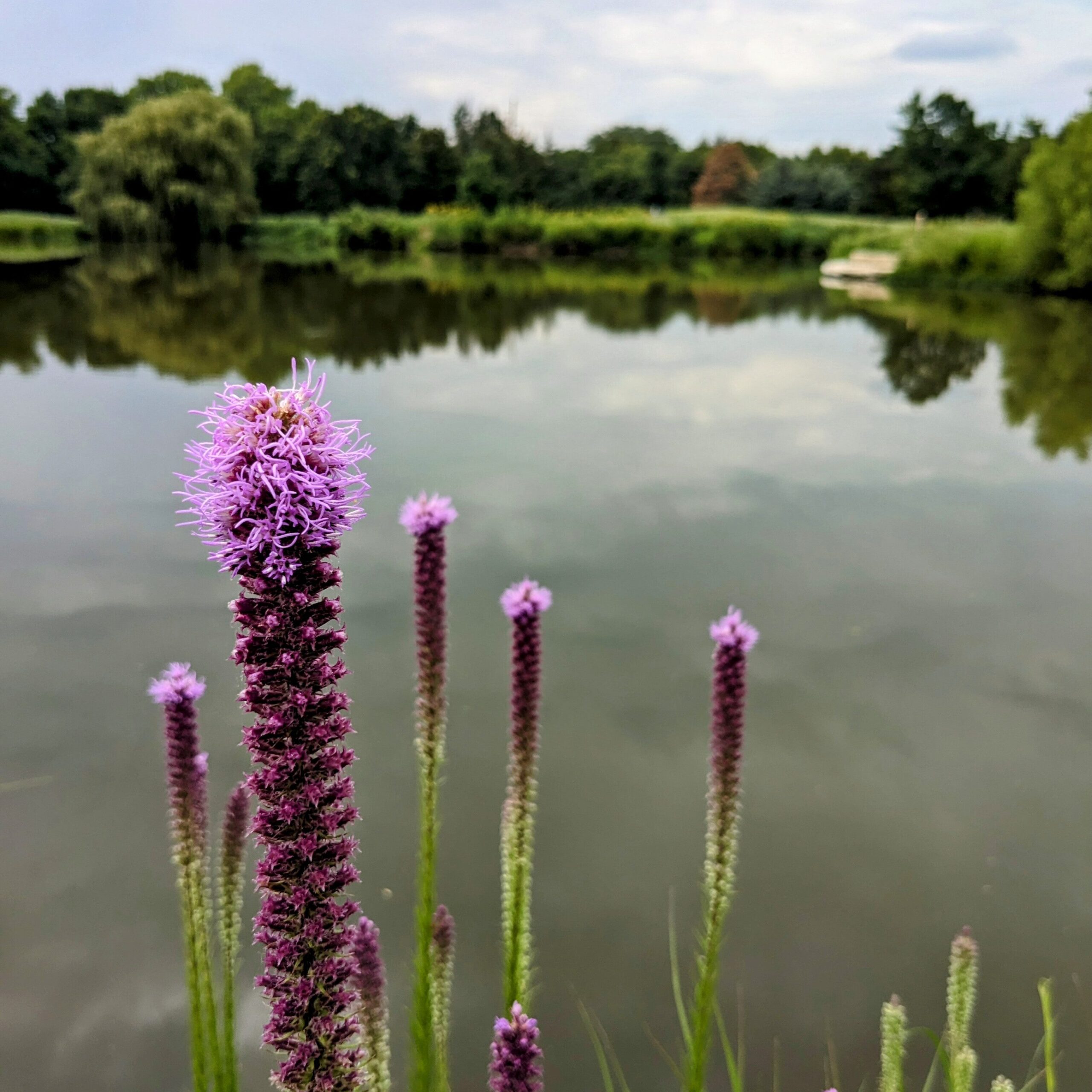Portions of this article can also be found in our Summer 2023 issue of the Prairie Window Newsletter.
Having a summer intern here at the Arboretum is a lot of fun. Not only because I have someone to commiserate with when the temperatures are unbearable, or someone to laugh with when everything goes wrong, but also because they always ask “why?”

Why did we cut it by hand instead of mowing? Why did we move those leaves or add mulch? Why do we maintain this garden different from the next one?
The answers to these questions almost always center around priorities and purpose. To curate an Arboretum, we manipulate our natural environment in different ways, with goals in mind for each specific area.
- Is the purpose of this garden to attract butterflies? Then we don’t do any trimming during peak caterpillar hatching time.
- Are we hoping to encourage lightning bugs to nest here? Don’t rake away the leaf litter.
- Is the goal of this space to be symmetrical, patterned, or have a certain color palette? Then we weed more frequently and stick closely to the original design.
Knowing your priorities and the purpose of a space easily guides your decisions.

Evolving Priorities
Traditional landscaping has one job: to look pretty. We started creating ornamental gardens at castles and estates to signify wealth and create beauty. Several hundred years of horticulture practice have passed with little change. These human-centric values still have a stronghold on the landscaping industry. The typical shrubs, trees, and perennials installed around a newly built home in an American suburb are purely ornamental, with no relation to wildlife, climate, or geographic region.
Their purpose? Purely aesthetic. And so all the future decisions must serve that goal. Heavy chemical use to maintain the green lawn? Yes, to preserve the aesthetic. Constant trimming and shaping of shrubs? Yes, to make them look different from their natural shape. Overuse of water to keep non-native species green in a climate they did not evolve in? Of course. This is not a sustainable option, and at its worst is an outdated practice steeped in vanity and classism. Thankfully these priorities are beginning to shift to a more sustainable model of landscaping.
Find Your Purpose
Everybody has to decide for themselves, and for each unique space, what the purpose and priorities are. If the goal is to teach students about native plants, then we should prioritize plant labels. spacing, and good organization in the garden. If the purpose is to increase habitat, then prioritize ecosystem function — high plant diversity, dense, layered planting, less structure.

There is no “one way” to successfully use native plants. Some of our members are looking to decrease water usage, but keep their landscaping looking traditional and tidy. In this case, we might suggest using some cultivated varieties of natives that don’t spread or seed out much, but are very drought tolerant. For folks hoping to restore a prairie plot for conservation purposes, we would recommend straight species only and help them find an appropriate ratio of grasses and flower species native to their region, or even their county.
The plants chosen for each new project should be chosen with clear purpose in mind. A few years in, when you are adding new plants to the garden or making tough decisions, remembering your purpose and priorities will help keep you on track!
A big thanks to our grounds interns present and past, who have all asked excellent questions and contributed their talents to the Arboretum. You challenge us to always think critically about our priorities and purpose!

